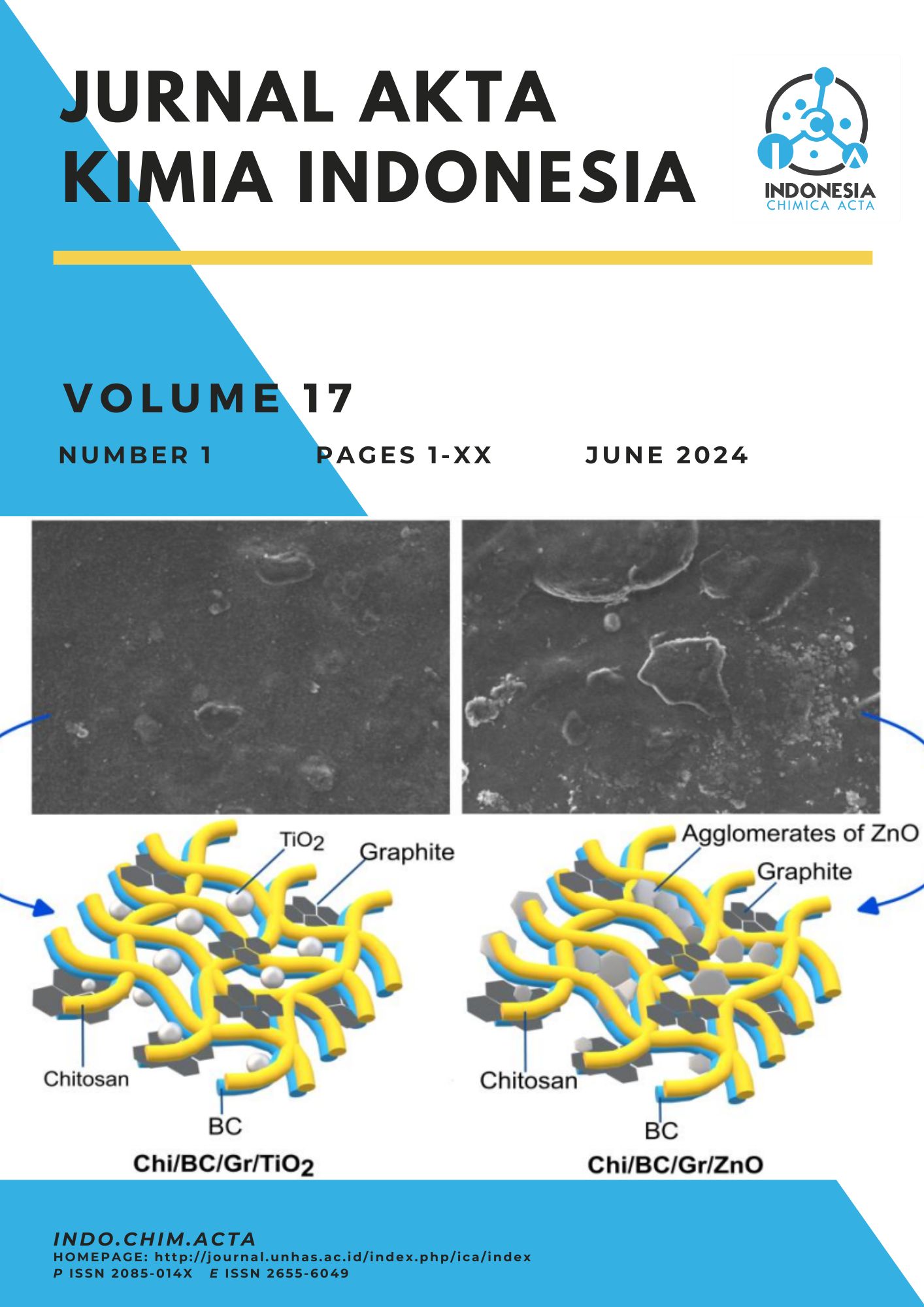Profiling of Modified Chitosan-Based Composites as Tetracycline Hydrochloride Drug Release Systems
Abstract
Controlled drug release systems (DRS) are a crucial technology in the medical field, and they continue to be developed today. Chitosan is useful in manufacturing-controlled drug release systems due to its non-toxic, biodegradable, and biocompatible properties. However, it has some limitations when it comes to its physical and mechanical properties. Combining chitosan with other materials, such as bacterial cellulose (BC), graphite (Gr), ZnO, and TiO2, can improve its mechanical properties and antibacterial activity. This study aims to synthesize Chi/BC/Gr/TiO2 and Chi/BC/Gr/ZnO composites as drug release systems. When tested with TCH, an antibiotic model, the drug release kinetics of the composite followed the Hixson-Crowell and Korsmeyer-Peppas kinetics models. Additional tests for physical and mechanical properties, as well as antibacterial activity, have also been conducted. Mechanical properties in terms of tensile strength and Young’s modulus in composites with adding Gr, TiO2, and ZnO have higher values than Chi/BC alone. Compared to positive control, both TCH-loaded composites show higher inhibition against S. aureus bacteria. Based on the results of this study, composite Chi/BC/Gr/TiO2 and Chi/BC/Gr/ZnO have potential applications as DRS such as wound dressing.
Full text article
Authors
Copyright (c) 2024 Nurul Anjartikasari, Emmy Yuanita, Ni Komang Tri Dharmayani, Sudirman, Ni Made Sudewianingsih, Maria Ulfa

This work is licensed under a Creative Commons Attribution-ShareAlike 4.0 International License.
This is an open access journal which means that all contents is freely available without charge to the user or his/her institution. Users are allowed to read, download, copy, distribute, print, search, or link to the full texts of the articles in this journal without asking prior permission from the publisher or the author.
Jurnal Akta Kimia Indonesia (Indonesia Chimica Acta) operates a CC BY-SA 4.0 © license for journal papers. Copyright remains with the author, but Jurnal Akta Kimia Indonesia (Indonesia Chimica Acta) is licensed to publish the paper, and the author agrees to make the article available with the CC BY-SA 4.0 license. Reproduction as another journal article in whole or in part would be plagiarism. Jurnal Akta Kimia Indonesia (Indonesia Chimica Acta) reserves all rights except those granted in this copyright notice.

